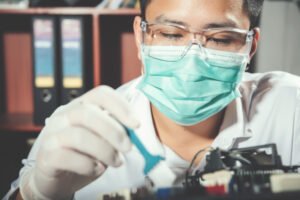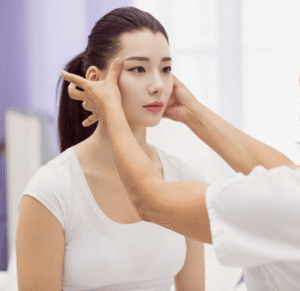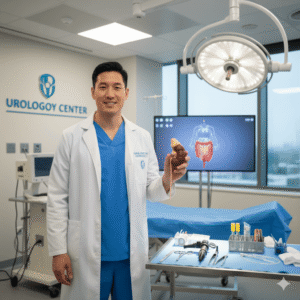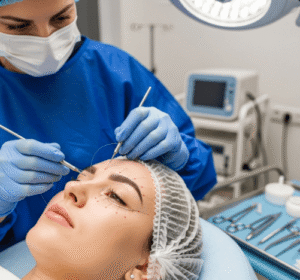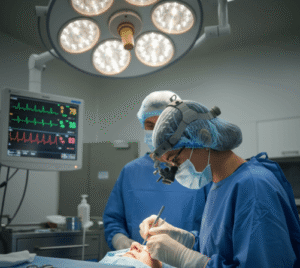What It Is
Keloid excision of the ear is a surgical procedure to remove keloids—raised, firm scars that form due to an overgrowth of tissue after injury or piercing. Ear keloids are especially common after ear piercings, lacerations, or surgical scars.
In Korea, keloid excision is performed using advanced surgical techniques combined with adjunct therapies such as steroid injections, pressure therapy, and laser treatment. This combination helps minimize recurrence, which is a common challenge in keloid management. Korean clinics are well-known for their meticulous surgical methods and comprehensive aftercare.
Why It’s Done
Medical & Cosmetic Purposes:
- Removes unsightly, raised scars on the earlobe or cartilage
- Relieves itching, pain, or tenderness caused by keloids
- Restores ear symmetry and aesthetics
- Improves self-confidence, particularly for patients with visible keloids
Patient Considerations:
- More common in individuals with darker skin tones or genetic predisposition to keloids
- Often develops after ear piercings or repeated trauma
- Surgery is best suited for patients who commit to ongoing aftercare to prevent recurrence
Alternatives
- Steroid Injections: Reduce keloid size and symptoms; may be used alone or after excision
- Cryotherapy: Freezing treatment to shrink smaller keloids
- Laser Therapy: Helps flatten and lighten keloids, but rarely eliminates them completely
- Radiotherapy: Sometimes used after surgery in stubborn or recurrent cases
- Silicone Gel Sheets: Non-surgical scar management option, less effective for large keloids
Preparation
Before ear keloid excision in Korea, patients undergo:
- Consultation: Assessment of keloid size, history, and risk of recurrence
- Medical Screening: Basic blood tests and health evaluation
- Pre-Operative Instructions: Stop smoking, alcohol, and blood-thinning medications before surgery
- Anesthesia: Local anesthesia is most common; sedation may be used for larger keloids or anxious patients
How It’s Done
Type: Minor surgical procedure, outpatient basis
Duration: 30–90 minutes, depending on keloid size and complexity
Procedure Steps:
- Local anesthesia applied to numb the area
- The keloid is carefully excised, preserving as much healthy tissue as possible
- The wound is closed with fine sutures for a neat appearance
- Adjunctive therapy—such as steroid injections, pressure earrings, or laser treatment—is applied immediately or soon after surgery to reduce recurrence risk
Hospitalization: Not required; patients return home the same day
Recovery
- First Week: Mild swelling, redness, or soreness around the surgical site
- Dressings: A protective bandage or pressure earring may be recommended
- Stitches: Removed within 5–7 days if non-dissolvable
- Downtime: Normal activities resume immediately or within a few days
- Aftercare: Regular follow-up visits for steroid injections or laser therapy
- Final Results: Improved ear contour visible after 1–2 months, with scar maturation continuing over several months
Possible Complications
- Recurrence of keloid (the most common risk)
- Infection at the incision site (rare with proper aftercare)
- Asymmetry of earlobes if a large keloid is removed
- Visible scarring (minimized with advanced closure techniques and post-op therapies)
- Temporary numbness or tightness around the ear
Treatment Options in Korea
Diagnosis
Korean clinics typically perform:
- Physical Examination of the keloid (size, texture, thickness)
- Patient History Review to determine cause and recurrence risk
- Treatment Planning with multimodal therapy (surgery + adjunctive care)
Medical Treatments
For small or early keloids:
- Steroid injections to shrink and soften scars
- Laser treatment to reduce redness and thickness
- Pressure therapy (special earrings or dressings)
Surgical or Advanced Therapies
- Keloid Excision Alone: Removal of the keloid with careful wound closure
- Excision + Steroid Injections: Reduces chance of recurrence
- Excision + Radiotherapy: Used in recurrent or severe cases
- Excision + Pressure Therapy: Custom compression earrings applied to flatten scars
Rehabilitation and Support
- Scheduled follow-up visits for steroid injections and scar monitoring
- Scar management with silicone gel, ointments, or laser therapy
- International patient support: translation, concierge recovery services, and long-term monitoring





